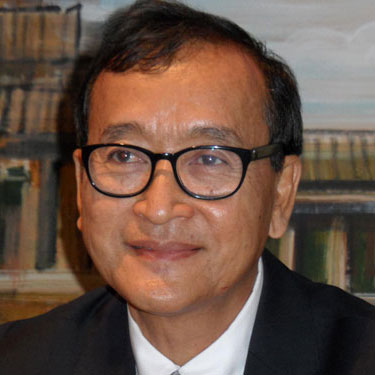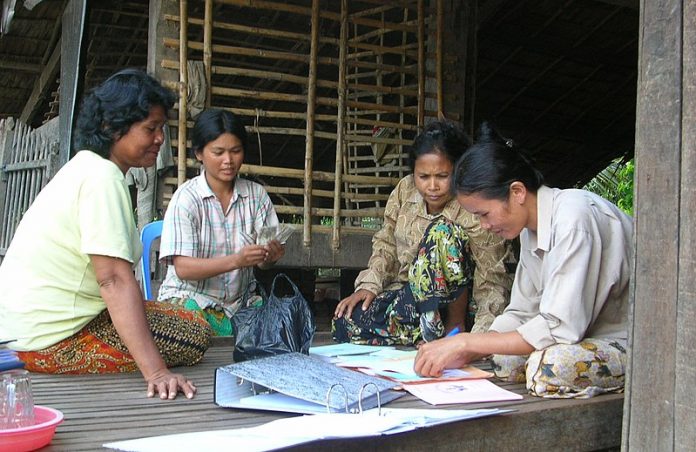Cambodia’s microfinance loans are a slow-motion car crash with millions of victims, for which the world’s banks share responsibility.
The Cambodian League for the Promotion and Defense of Human Rights (Licadho) has linked exponential growth in microfinance lending to increased coerced land sales, child labour, debt-driven migration and bonded labour. And that was before COVID-19.
The issue threatens the country’s future prosperity. Back in 2009, microfinance lending in Cambodia totalled just $300 million. Between 2015 and 2017 alone, the average loan size increased by 80%. By the end of 2019, more than 2.6 million Cambodians held more than $10 billion in microloans. The average loan of $3,804 was by far the highest in the world, and more than double Cambodia’s GDP per head.
Such breakneck growth is driven by profit-seeking rather than any desire to lift people out of poverty. Licadho has shown that microfinance “credit officers” scour Cambodia’s villages to find new customers and get them to sign contracts. These officers are usually under pressure from their managers to meet monthly lending targets.
From UN-supported non-profit NGO to loan shark
ACLEDA, or the Association of Cambodian Local Economic Development Agencies, was originally a non-profit NGO. It was set up by the United Nations Development Program (UNDP) in 1993 to seek to alleviate poverty among returned refugees, widows, internally displaced persons and victims of war. It benefited from funding and expert advice from the International Labour Organisation.
It is now Cambodia’s largest commercial bank and holds more than $3 billion in outstanding loans, including more than $1.6 billion in its “small loan” portfolio. In May, it listed on the Cambodian stock market. This completes the transition of what was originally a non-profit, non-government organisation into a fully fledged loan shark.
All of Cambodia’s largest micro-loan providers are majority-owned by foreign institutions, with the exception of ACLEDA. But even here, the bank’s shareholders include Sumitomo Mitsui Banking Corporation of Japan, Cofibred, which is part of the BRED Banque Populaire group in France, Orix Corporation of Japan, and Triodos Bank, based in the Netherlands.
ACLEDA’s IPO disclosure document draws attention to the risks that shareholders are running: the high concentration of Cambodia’s exports in the garment, textile, and footwear sector and the potential suspension of preferential access to markets such as the European Union. Further, the disclosures note, a boom in real estate has been driven by foreign direct investment, and if those inflows dry up, there could be a collapse in property prices. Most microloans in Cambodia use property or land as collateral.
More importantly, foreign institutions need to understand what their names, reputations and money are being used to legitimize. The reputational damage that they would face from an economic collapse in Cambodia is impossible to calculate.
Eat or Repay?
The reflex of the government has been to protect itself by making sure that microfinance lenders do not appear to be state-run entities. In 2017, Prime Minister Hun Sen even ordered telephone providers to send out audio and text messages to make the point. As Licadho says, this may have protected the government, but did nothing to help borrowers.
In the face of the current economic crisis linked to the COVID-19 pandemic and the growing impossibility for borrowers to make payments, Hun Sen has not hesitated to openly encourage the banks to seize properties from borrowers who are drowning in debt.
Research published jointly by Licadho and local trade unions in June shows the realities of microfinance during COVID-19. Without immediate debt relief, thousands of Cambodian workers will have to sell their land, or their homes, or eat less to repay their debts.
The joint survey concerned 162 garment workers, 158 of whom are women, between March and May 2020. The workers are from three factories in Phnom Penh and Kampong Chhnang that have partially or fully suspended operations due to COVID-19. On average, combined monthly payments for debt and food expenses exceeded workers’ salaries, meaning the vast majority of microloan borrowers were having to eat less to be able to repay.
Only four of the workers didn’t have any debts. The two most common reasons for having taken the loan were to build a house, or to pay off an existing loan. This refutes the claim that microloans help recipients to expand their businesses and raise incomes. The least-common reasons for having taken a microloan, Licadho found, were “doing business” and “agriculture”.
Almost every worker questioned said that they wouldn’t be able to repay their debts if their job was suspended. These people overwhelmingly disagree with the self-comforting fiction used by banks that microfinance improves the lives of the poor: 96% said their life was either “much worse” (80%) or “slightly worse” (16%) than before taking out the microloan.
The survey’s authors say that the World Bank as well as state agencies from countries including Australia, Germany, the Netherlands, Sweden and Austria have helped to funnel investments into Cambodian microfinance which are saddling even more Cambodians with unmanageable debts. This is like pouring fuel onto a fire. What is needed is debt relief rather than more unsustainable loans.
International financial institutions have a responsibility to their own stakeholders to act in ethical and sustainable ways. They also have clear leverage to curb the worst excesses of microfinance lending in Cambodia. The time to use it is now.
The views and opinions expressed in this article are those of the author.

Sam Rainsy, Cambodia’s finance minister from 1993 to 1994, is the co-founder and acting leader of the opposition Cambodia National Rescue Party (CNRP).


